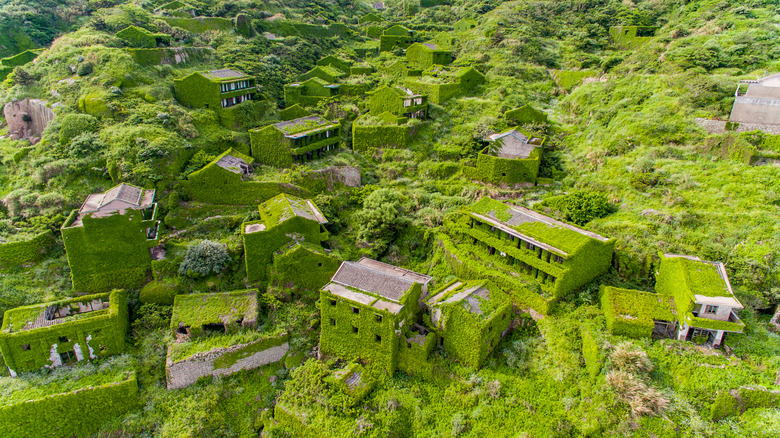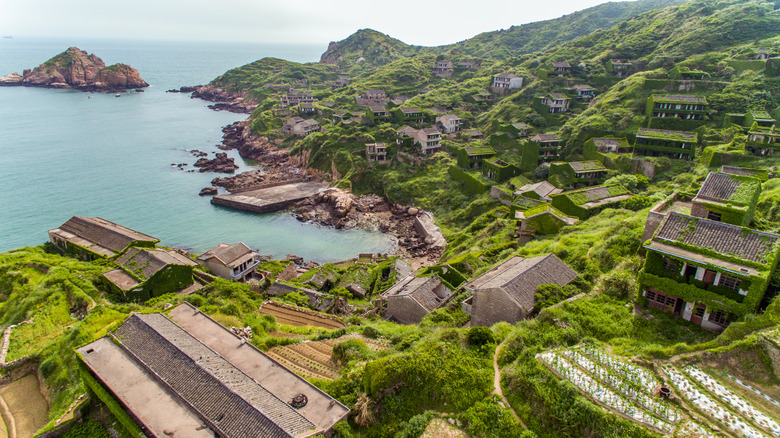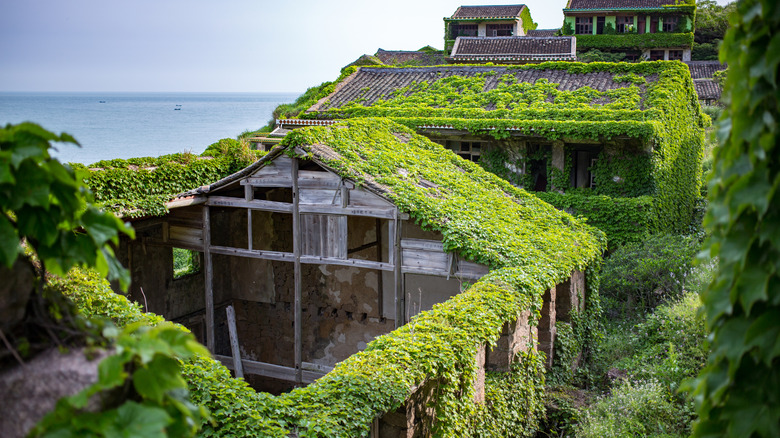Our planet is scattered with the remains of human history: ghost towns in the American West, ancient cities on mountaintops, and crumbling castles considered the most haunted destinations in the entire world. These abandoned relics also tend to attract visitors, drawn to the stark beauty and glimpse into a long-gone past. One of these deserted spots has leveraged its unusual beauty into a tourism hotspot, thanks in part to viral photos: Houtouwan village on the Chinese island of Shengshan.
Houtouwan is known as one of the world’s “greenest villages,” not because of its environmental practices but, more literally, because the leftover buildings are now being overtaken with lush greenery. Nature is reclaiming her ground in Houtouwan, with dramatic results. Although there are no longer any official residents of Houtouwan, island locals have added hiking trails, a viewing platform, and even several small inns to capitalize on tourism. Houtouwan is a photographer’s dream, with its many cliffside, vine-covered buildings scattered on the hills, leading down to the turquoise ocean.
History of the greenest village in China
China is home to many abandoned sites, like Shicheng, a perfectly preserved ancient Asian city submerged in a lake known as the “Atlantis Of The East.” Unlike Shicheng, which was deliberately flooded by the Chinese government during the building of a hydroelectric dam, Houtouwan had a more gradual decline. Despite the appearance — many of the abandoned homes are still full of furniture just as their owners left it, giving the impression that many fled in a hurry — the former residents left slowly.
Once a thriving fishing village on the coast of Shengshan Island, approximately 40 miles from Shanghai, Houtouwan’s population hit a high of 3,000 in the 1980s. However, as the fish became more scarce, locals had to travel to the mainland for work, resulting in long days and a lower quality of life. Eventually, migration to the mainland was inevitable for most of the residents, except for the few remaining who were relocated to a nearby village in the early 2000s. In 2015, after Houwoutan went viral due to pictures of its buildings being swallowed by nature, islanders began to make several changes regarding tourism. Currently, Houtouwan receives hundreds of visitors a day, who carefully wander the new trails and the old streets, snapping shots of the eerie leftover belongings and the ivy-covered buildings overlooking the coast.




